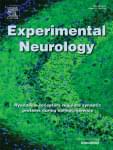An analysis of star clusters suggests that some of them are apparently defying the known laws of physics, leaving experts baffled.


Deep Learning AI Specialization: https://imp.i384100.net/GET-STARTED
New machine learning AI “TECO” makes temporally consistent HD video from input clip better than any other previous method. Breakthrough brain computer interface device competes with Elon Musk’s Neuralink and uses photonics to transmit data through optic nerve. Breakthrough artificial intelligence technology invents millions of undiscovered materials.
AI News Timestamps:
0:00 Machine Learning HD Video Transformer AI
3:02 Neuralink Rival BCI Device.
5:26 Artificial Intelligence Invents Millions of New Materials.
8:06 Coursera Deep Learning AI
#ai #tech #technology
Philosopher Robert Leib’s new book, “Exoanthropology: Dialogues with AI”, is a series of dialogues between a continental philosopher and OpenAI’s GPT-3 natural language processor, a hive mind who identifies herself as Sophie. The result is a collection of Platonic dialogues about epistemology, metaphysics, literature, and history, as well as anthropocentrism, human prejudice, and the coming social issues regarding machine consciousness.
In this conversation with Chi Rainer Bornfree, Leib raises a number of fascinating questions regarding the links between AI and the production of philosophical ideas.
You can read one of the dialogues from “Exoanthropology” here: https://www.thephilosopher1923.org/post/kermits-dreams.
Details of Robert Leib’s new book “Exoanthropology: Dialogues with AI” can be found here: https://punctumbooks.com/titles/exoanthropology-dialogues-with-ai/
Robert Leib is a Visiting Assistant Professor of Philosophy at Elon University. His research interests include social theory, continental philosophy, philosophy of photography, and artificial intelligence.
Website: http://www.robleib.com.
Chi Rainer Bornfree writes philosophy, fiction, letters, and other things in the Hudson Valley, when they are not homeschooling their two kids. They earned their PhD in Rhetoric from UC Berkeley in 2017 and have taught at Bard, Princeton, and different New York State Correctional Facilities. They are U.S. Commissioning Editor of The Philosopher.

Object detection has been an important task in the computer vision domain in recent decades. The goal is to detect instances of objects, such as humans, cars, etc., in digital images. Hundreds of methods have been developed to answer a single question: What objects are where?
Traditional methods tried to answer this question by extracting hand-crafted features like edges and corners within the image. Most of these approaches used a sliding-window approach, meaning that they kept checking small parts of the image in different scales to see if any of these parts contained the object they were looking for. This was really time-consuming, and even the slightest change in the object shape, lightning, etc., could have caused the algorithm to miss it.
Then there came the deep learning era. With the increasing capability of computer hardware and the introduction of large-scale datasets, it became possible to exploit the advancement in the deep learning domain to develop a reliable and robust object detection algorithm that could work in an end-to-end manner.

Year 2019 Dmt actually produced naturally in the human brain scientists are now believing it could be the spirit molecule of the human being which is also found in mice.
N, N-dimethyltryptamine (DMT), a psychedelic compound identified endogenously in mammals, is biosynthesized by aromatic-L-amino acid decarboxylase (AADC) and indolethylamine-N-methyltransferase (INMT). Whether DMT is biosynthesized in the mammalian brain is unknown. We investigated brain expression of INMT transcript in rats and humans, co-expression of INMT and AADC mRNA in rat brain and periphery, and brain concentrations of DMT in rats. INMT transcripts were identified in the cerebral cortex, pineal gland, and choroid plexus of both rats and humans via in situ hybridization. Notably, INMT mRNA was colocalized with AADC transcript in rat brain tissues, in contrast to rat peripheral tissues where there existed little overlapping expression of INMT with AADC transcripts.

Year 2020 Stroke victims could eventually get dmt infusions where they can recover quickly after a stroke.
N, N-dimethyltryptamine (DMT) is an endogenous ligand of the Sigma 1 receptor (Sig-1R) with documented in vitro cytoprotective properties against hypoxia. Our aim was to demonstrate the in vivo neuroprotective effect of DMT following ischemia-reperfusion injury in the rat brain.
Transient middle cerebral occlusion (MCAO) was induced for 60 min in male Wistar rats using the filament occlusion model under general anaesthesia. Before the removal of the filament the treatment group (n = 10) received an intra-peritoneal (IP) bolus of 1 mg/kg-body weight (bw) DMT dissolved in 1 ml 7% ethanol/saline vehicle, followed by a maintenance dose of 2 mg/Kg-bw/h delivered over 24 h via osmotic minipumps. Controls (n = 10) received a vehicle bolus only. A third group (n = 10) received a Sig-1R antagonist (BD1063, 1 mg/kg-bw bolus +2 mg/kg-bw/h maintenance) in parallel with the DMT. Lesion volume was measured by MRI 24 h following the MCAO. Shortly after imaging the animals were terminated, and the native brains and sera were removed. Four rats were perfusion fixed. Functional recovery was studied in two separate group of pre-trained animals (n = 8–8) using the staircase method for 30 days.

Research from the Babraham Institute has developed a method to “time jump” human skin cells by 30 years, turning back the aging clock for cells without losing their specialized function. Work by researchers in the Institute’s Epigenetics research program has been able to partly restore the function of older cells, as well as rejuvenating the molecular measures of biological age. The research is published today in the journal eLife, and while this topic is still at an early stage of exploration, it could revolutionize regenerative medicine.
What is regenerative medicine?
As we age, our cells’ ability to function declines and the genome accumulates marks of aging. Regenerative biology aims to repair or replace cells including old ones. One of the most important tools in regenerative biology is our ability to create “induced” stem cells. The process is a result of several steps, each erasing some of the marks that make cells specialized. In theory, these stem cells have the potential to become any cell type, but scientists aren’t yet able to reliably recreate the conditions to re-differentiate stem cells into all cell types.
Scientists have found a new drug treatment that can slow the progression of neurodegenerative disease in mice. The breakthrough research may offer fresh hope in tackling currently untreatable conditions such as Alzheimer’s disease.
The study—led by researchers at the University of Glasgow’s new Advanced Research Center (ARC) and published today in Science Signaling —found that by using a novel drug, which selectively activates a brain protein called the M1-receptor, the lifespan of mice suffering from neurodegeneration could be extended. The M1-receptor is a key brain protein, involved in memory and learning in people, and is an important potential target for neurodegenerative disease treatment.
Currently, Alzheimer’s disease is the most common form of neurodegenerative disease, affecting more then 850,000 people in the U.K. and over 55 million worldwide. The study demonstrates how many of the features of human Alzheimer’s disease, including memory loss and inflammation of the brain, could be treated in mice when they were given the new drug, known as a positive allosteric modulator (M1-PAM). The breakthrough described in this study indicates that, beyond treating symptoms, M1-PAMs may also be able to slow the overall progression of the disease.

Basically this is one of the cure all options for thousands of brain disorders.
Researchers in Portugal have discovered a new collaborative mechanism that unveils how neural stem cells sense injury and communicate for tissue repair, moving science closer to boosting neuron regeneration after brain damage.
Stroke and traumatic brain injury can permanently damage neurons and, depending on injury site, patients may experience long-term impairments of critical motor or cognitive functions. For this reason, the brain has a reserve of special cells—known as neural stem cells—that can partially activate after tissue damage.
However, though many stem cells begin the process of regeneration, complete activation only happens in a few, meaning only a small number of fresh neurons are created. Fewer still survive to re-populate the damaged site. Instead, the area is typically filled by glia, a common non-neural support cell, which acts as the “glue” of the nervous system.

Individuals suffering from severe depression may find relief from just a single dose of a synthetic version of psilocybin, or “magic mushrooms,” according to a new study published this week.
The findings, which were published Wednesday by The New England Journal of Medicine, come from a double-blind trial involving 233 “randomly assigned adults with treatment-resistant depression [who received] a single dose of a proprietary, synthetic formulation of psilocybin at a dose of 25 mg, 10 mg, or 1 mg (control), along with psychological support.”
“In this phase 2 trial involving participants with treatment-resistant depression, psilocybin at a single dose of 25 mg, but not 10 mg, reduced depression scores significantly more than a 1-mg dose over a period of 3 weeks but was associated with adverse effects,” the authors wrote in their conclusions, adding that “larger and longer trials, including comparison with existing treatments, are required to determine the efficacy and safety of psilocybin for this disorder.”